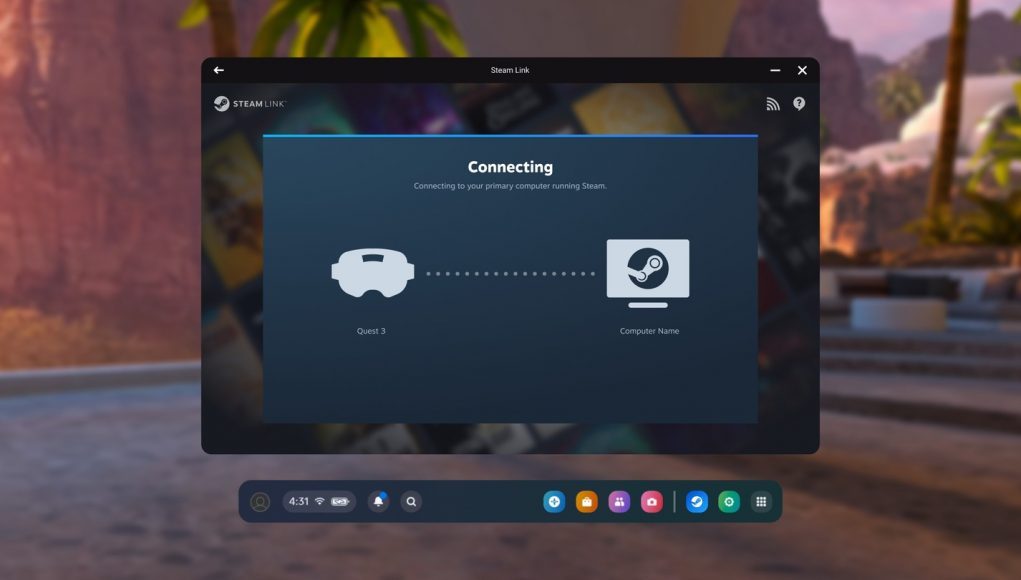Valve hasn’t wasted any time in pushing out patches to its recently updated Steam Link function, which lets Quest users wirelessly connect to their PCs to play SteamVR games. Users with particularly great PC setups should expect a “significant improvement” in how PC VR games look on Quest now.
Thanks to SteamVR Beta 2.2.1 update released earlier this week for Steam Link, Quest users now have ‘Advanced Supersample Filtering’, which was released to majorly improve wirelessly streaming video quality when using high supersampling rates.
Supersampling is a technique used to increase the effective resolution of a frame by rendering the scene larger than its final resolution, and then downsampling back with a filter—with the end goal being to remove visible pixelated edges, also known as aliasing.
“For users seeing poor video quality when not using “auto” settings, this will be a significant improvement,” the company says in the patch notes.
Valve says Advanced Supersample Filtering was “accidentally disabled for Meta headsets as a side-effect of another change several years ago.”
Notably, users will likely need a fairly robust gaming rig to notice a difference beyond the auto settings, although it’s nice to know supersample filtering is there should you need it when heading into resource-intensive games like Half-Life: Alyx (2020).
While you can check out the full patch notes here, here’s a look at some of the most important bits from the 2.2.1 update:
- Enable 10-bit video encoding on AMD graphics cards with this capability. (AMD support is still experimental at this time.)
- Debug UI improvements.
- Fixed an issue that made some networking lag worse than it should be by reducing the impact of stream resets in non-optimal wireless configurations.
Allow connection to proceed even in network configurations without QoS support.







